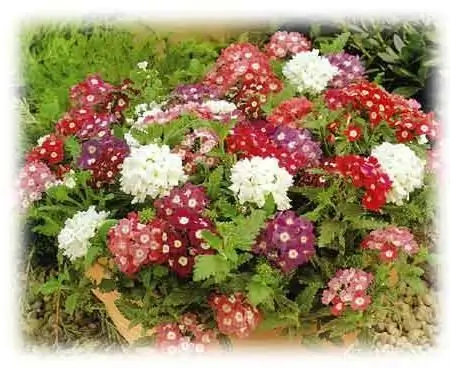Verbena officinalis is a herbaceous plant or shrub that has a creeping or erect stem, reaching a meter height. The culture has small leaves of an opposite arrangement of an oblong shape.

Small flowers are collected in panicles-inflorescences, which have different shades and colors. In nature, verbena officinalis is found on almost all continents, including Russia. The flowering period of the plant begins from the first days of summer and continues until the end of October.
Verbena: care and cultivation
Cultivation of a flower does not require much effort and knowledge, however, there are some features of cultivation. To obtain seedlings, seeds should be sown in early February. After the emergence of seedlings in March, it is already possible to dive the sprouts and plant them on the site. The shrub prefers loamy soil with abundant humus content.
When growing a plant in the ground, it is necessary to add a little nitrogen fertilizer in advance, an excess of additiveswill negatively affect the flowering of verbena. The plant prefers warm and bright places, it needs abundant watering.

Verbena: pure vessels
The plant can be given such a characteristic for its beneficial properties that allow it to be used in folk medicine to cleanse the body. The chemical composition of the flower is high in flavonoids, iridium glycosides, steroids, tannins, alkaloids and carotene.
Essential oils, mucous substances, silicic soluble acid, bitterness, which are part of the plant, have a beneficial effect on the human body. Verbena officinalis has a choleretic, analgesic, antispasmodic effect.
Thanks to its tonic, tonic properties, you can easily cope with many diseases. The plant normalizes metabolism, improves the functioning of the digestive tract. Taking verbena in the postpartum period enhances uterine contractions and stimulates lactation.
Verbena officinalis: uses

The plant in folk medicine is used for headaches, colds, colic in the intestines. Decoctions and teas from flowers and leaves of verbena are an excellent medicinal drug. In addition, the plant is able to increase appetite, it is used for neurodermatitis, cholecystitis, hepatitis, gastritis, cholelithiasis. For the treatment of the above ailments, an infusion is prepared from one tablespoon of grass, which is poured with boiling water (1 cup) and insisted for 20minutes. Take, after straining, 2 times a day, 100 grams each.
Verbena officinalis perfectly strengthens and cleanses the walls of veins and arteries, restoring vascular tone and damaged capillaries. Preparations created from the raw materials of the plant are able to reduce blood viscosity, increase the elasticity of blood vessels. The use of verbena tea can strengthen the immune system, improve microcirculation, and lower cholesterol levels. Verbena officinalis is effective in heart disease, thrombophlebitis and varicose veins.
It is not recommended to use the plant for hypertension, children under 14 years old. Prolonged use may irritate the stomach lining.






